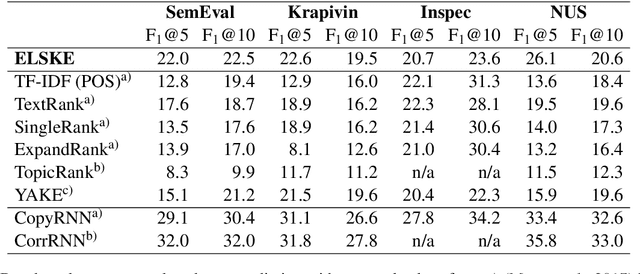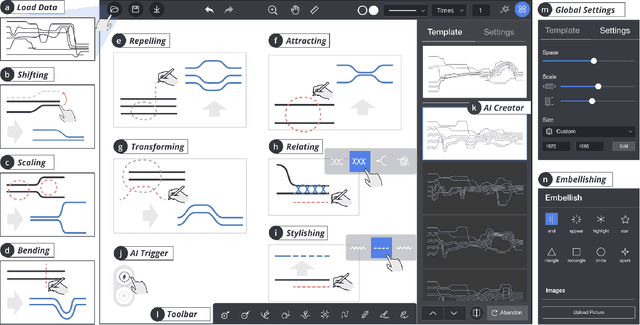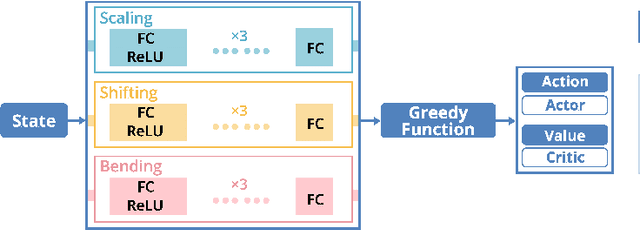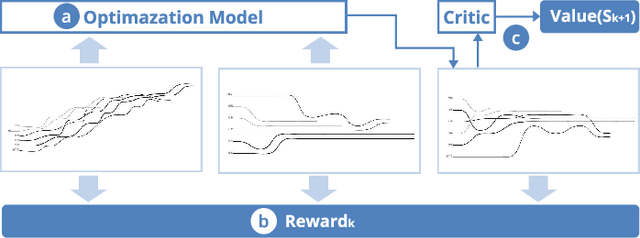Steffen Koch
Real-Time Visual Analysis of High-Volume Social Media Posts
Aug 06, 2021



Abstract:Breaking news and first-hand reports often trend on social media platforms before traditional news outlets cover them. The real-time analysis of posts on such platforms can reveal valuable and timely insights for journalists, politicians, business analysts, and first responders, but the high number and diversity of new posts pose a challenge. In this work, we present an interactive system that enables the visual analysis of streaming social media data on a large scale in real-time. We propose an efficient and explainable dynamic clustering algorithm that powers a continuously updated visualization of the current thematic landscape as well as detailed visual summaries of specific topics of interest. Our parallel clustering strategy provides an adaptive stream with a digestible but diverse selection of recent posts related to relevant topics. We also integrate familiar visual metaphors that are highly interlinked for enabling both explorative and more focused monitoring tasks. Analysts can gradually increase the resolution to dive deeper into particular topics. In contrast to previous work, our system also works with non-geolocated posts and avoids extensive preprocessing such as detecting events. We evaluated our dynamic clustering algorithm and discuss several use cases that show the utility of our system.
Efficient Sparse Spherical k-Means for Document Clustering
Jul 30, 2021
Abstract:Spherical k-Means is frequently used to cluster document collections because it performs reasonably well in many settings and is computationally efficient. However, the time complexity increases linearly with the number of clusters k, which limits the suitability of the algorithm for larger values of k depending on the size of the collection. Optimizations targeted at the Euclidean k-Means algorithm largely do not apply because the cosine distance is not a metric. We therefore propose an efficient indexing structure to improve the scalability of Spherical k-Means with respect to k. Our approach exploits the sparsity of the input vectors and the convergence behavior of k-Means to reduce the number of comparisons on each iteration significantly.
ELSKE: Efficient Large-Scale Keyphrase Extraction
Feb 10, 2021

Abstract:Keyphrase extraction methods can provide insights into large collections of documents such as social media posts. Existing methods, however, are less suited for the real-time analysis of streaming data, because they are computationally too expensive or require restrictive constraints regarding the structure of keyphrases. We propose an efficient approach to extract keyphrases from large document collections and show that the method also performs competitively on individual documents.
Visual Neural Decomposition to Explain Multivariate Data Sets
Sep 11, 2020



Abstract:Investigating relationships between variables in multi-dimensional data sets is a common task for data analysts and engineers. More specifically, it is often valuable to understand which ranges of which input variables lead to particular values of a given target variable. Unfortunately, with an increasing number of independent variables, this process may become cumbersome and time-consuming due to the many possible combinations that have to be explored. In this paper, we propose a novel approach to visualize correlations between input variables and a target output variable that scales to hundreds of variables. We developed a visual model based on neural networks that can be explored in a guided way to help analysts find and understand such correlations. First, we train a neural network to predict the target from the input variables. Then, we visualize the inner workings of the resulting model to help understand relations within the data set. We further introduce a new regularization term for the backpropagation algorithm that encourages the neural network to learn representations that are easier to interpret visually. We apply our method to artificial and real-world data sets to show its utility.
PlotThread: Creating Expressive Storyline Visualizations using Reinforcement Learning
Sep 01, 2020



Abstract:Storyline visualizations are an effective means to present the evolution of plots and reveal the scenic interactions among characters. However, the design of storyline visualizations is a difficult task as users need to balance between aesthetic goals and narrative constraints. Despite that the optimization-based methods have been improved significantly in terms of producing aesthetic and legible layouts, the existing (semi-) automatic methods are still limited regarding 1) efficient exploration of the storyline design space and 2) flexible customization of storyline layouts. In this work, we propose a reinforcement learning framework to train an AI agent that assists users in exploring the design space efficiently and generating well-optimized storylines. Based on the framework, we introduce PlotThread, an authoring tool that integrates a set of flexible interactions to support easy customization of storyline visualizations. To seamlessly integrate the AI agent into the authoring process, we employ a mixed-initiative approach where both the agent and designers work on the same canvas to boost the collaborative design of storylines. We evaluate the reinforcement learning model through qualitative and quantitative experiments and demonstrate the usage of PlotThread using a collection of use cases.
 Add to Chrome
Add to Chrome Add to Firefox
Add to Firefox Add to Edge
Add to Edge